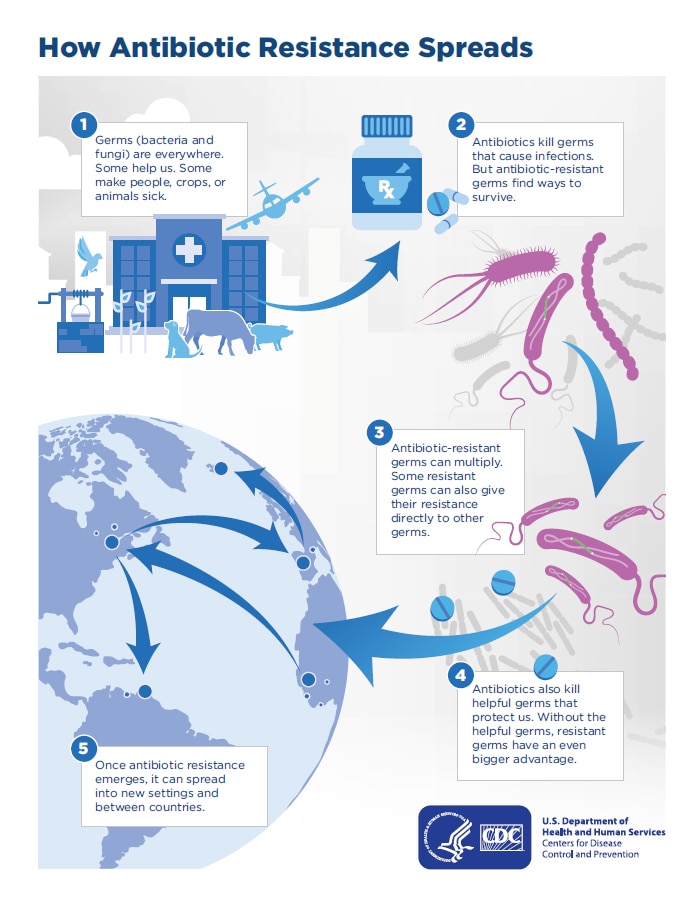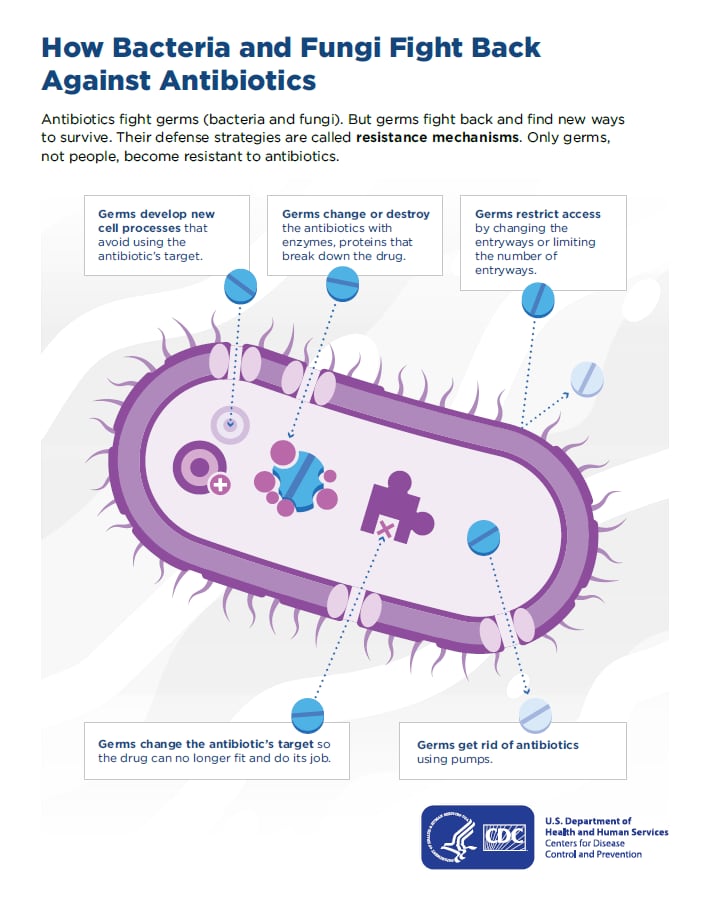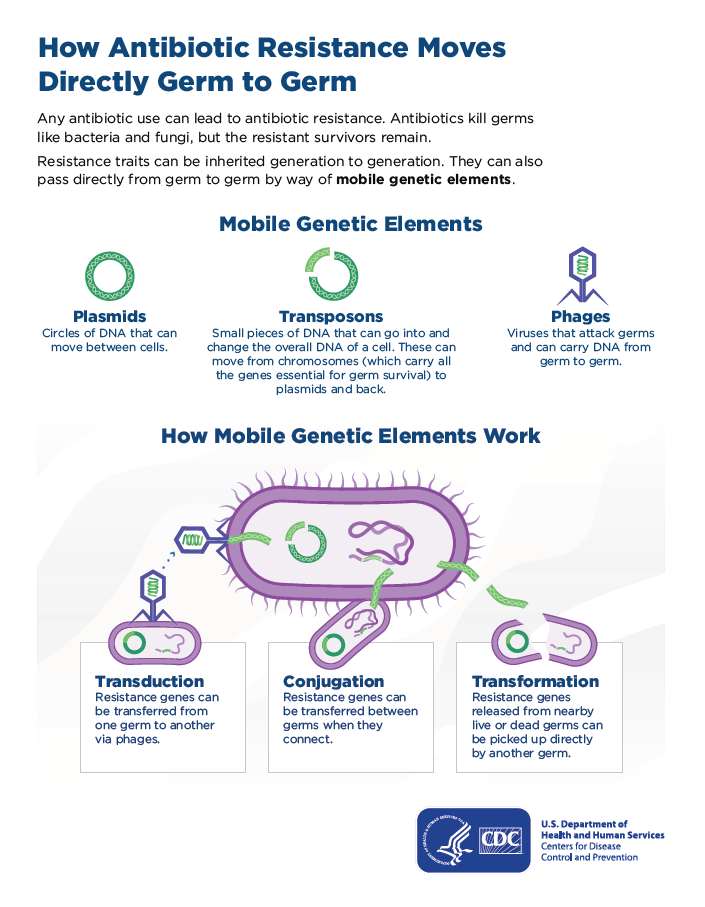01/17/2020 04:50 PM EST
Source: Centers for Disease Control and Prevention
Related MedlinePlus Pages: Antibiotic Resistance
Related MedlinePlus Pages: Antibiotic Resistance
How Antibiotic Resistance Happens
On This Page
Antibiotics save lives but any time antibiotics are used, they can cause side effects and lead to antibiotic resistance.
Since the 1940s, antibiotics have greatly reduced illness and death from infectious diseases. However, as we use the drugs, germs develop defense strategies against them. This makes the drugs less effective.
Antimicrobials Treat Infections Caused by Microbes
Microbes are very small living organisms, like bacteria. Most microbes are harmless and even helpful to humans, but some can cause infections and disease. Drugs used to treat these infections are called antimicrobials. The most commonly known antimicrobial is antibiotics, which kill or stop the growth of bacteria.
Two Types of Microbes
- Bacteria cause illnesses such as strep throat and food poisoning. Bacterial infections are treated with drugs called antibiotics (such as penicillin).
- Fungi cause illnesses like athlete’s foot and yeast infections. Fungal infections are treated with drugs called antifungals.
How Germs Become Resistant and Spread
- Germs (bacteria and fungi) are everywhere. Some help us. Some make people, crops, or animals sick. Some of those germs are resistant to antibiotics.
- Antibiotics kill germs that cause infections. But antibiotic-resistant germs find ways to survive. Antibiotics also kill good bacteria that protect the body from infection.
- Antibiotic-resistant germs can multiply. Some resistant germs can also give their resistance directly to other germs.
- Once antibiotic resistance emerges, it can spread into new settings and between countries.
Germ Defense Strategies
Antibiotics fight germs (bacteria and fungi). But germs fight back and find new ways to survive. Their defense strategies are called resistance mechanisms. Bacteria develop resistance mechanisms by using instructions provided by their DNA. Often, resistance genes are found within plasmids, small pieces of DNA that carry genetic instructions from one germ to another. This means that some bacteria can share their DNA and make other germs become resistant.
Examples of Defense Strategies for Germs
Germs can use defense strategies to resist the effects of antibiotics. Here are a few examples.
| Resistance Mechanisms (Defense Strategies) | Description |
|---|---|
| Restrict access of the antibiotic | Germs restrict access by changing the entryways or limiting the number of entryways. Example: Gram-negative bacteria have an outer layer (membrane) that protects them from their environment. These bacteria can use this membrane to selectively keep antibiotic drugs from entering. |
| Get rid of the antibiotic | Germs get rid of antibiotics using pumps in their cell walls to remove antibiotic drugs that enter the cell. Example: Some Pseudomonas aeruginosa bacteria can produce pumps to get rid of several different important antibiotic drugs, including fluoroquinolones, beta-lactams, chloramphenicol, and trimethoprim. |
| Change or destroy the antibiotic | Germs change or destroy the antibiotics with enzymes, proteins that break down the drug. Example: Klebsiella pneumoniae bacteria produce enzymes called carbapenemases, which break down carbapenem drugs and most other beta-lactam drugs |
| Bypass the effects of the antibiotic | Germs develop new cell processes that avoid using the antibiotic’s target. Example: Some Staphylococcus aureus bacteria can bypass the drug effects of trimethoprim |
| Change the targets for the antibiotic | Many antibiotic drugs are designed to single out and destroy specific parts (or targets) of a bacterium. Germs change the antibiotic’s target so the drug can no longer fit and do its job. Example: Escherichia coli bacteria with the mcr-1 gene can add a compound to the outside of the cell wall so that the drug colistin cannot latch onto it. |

























.png)











No hay comentarios:
Publicar un comentario